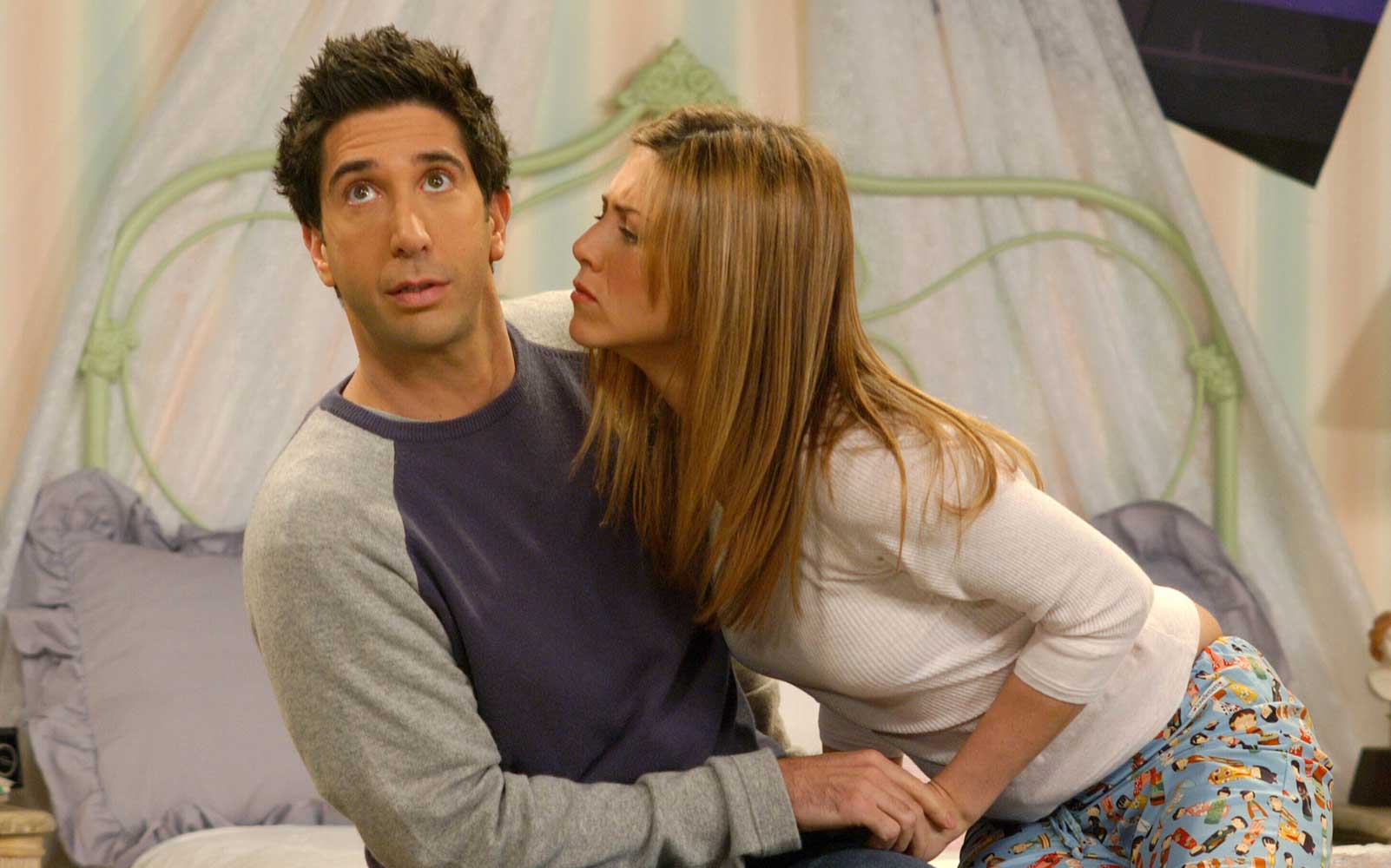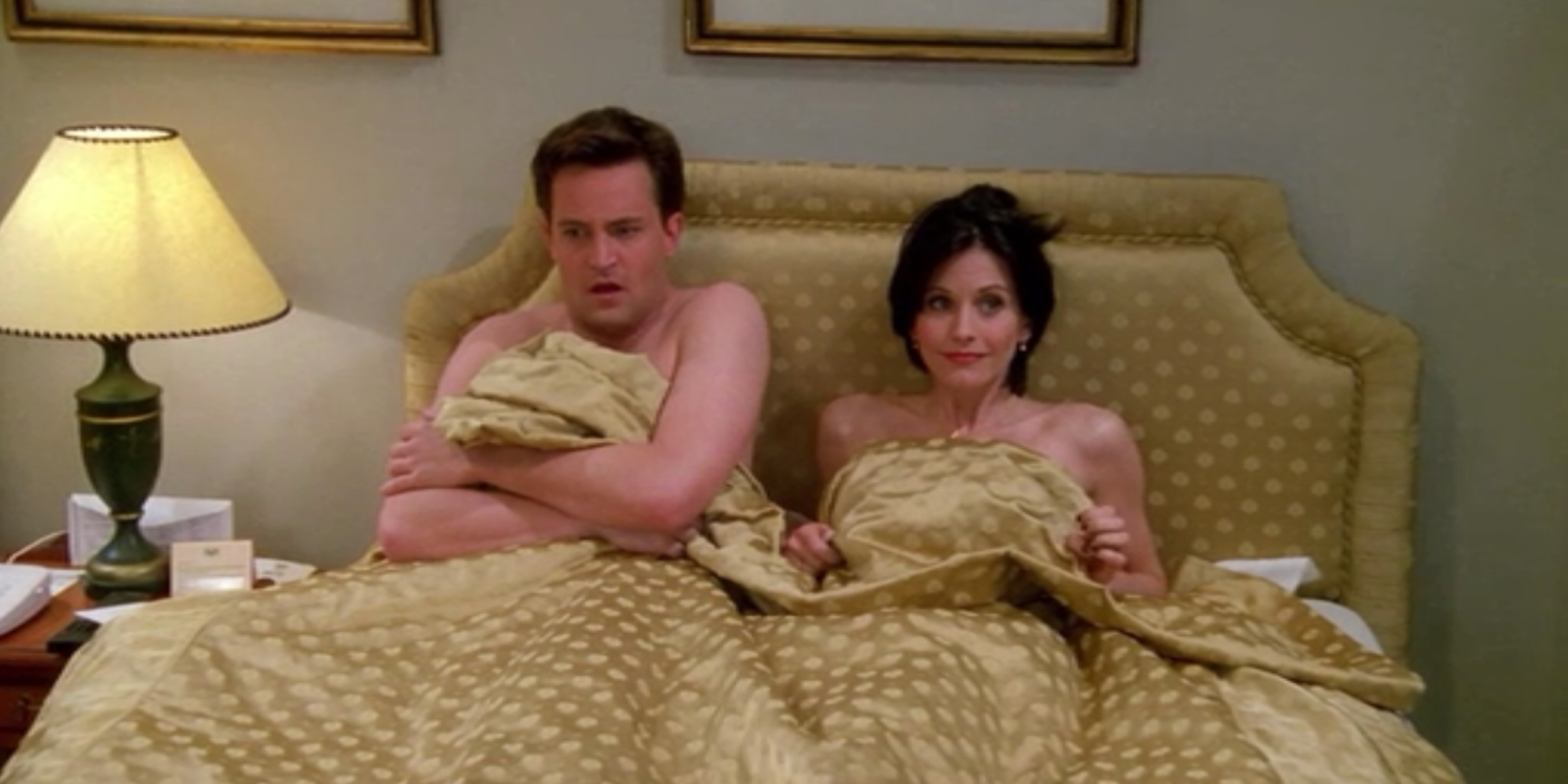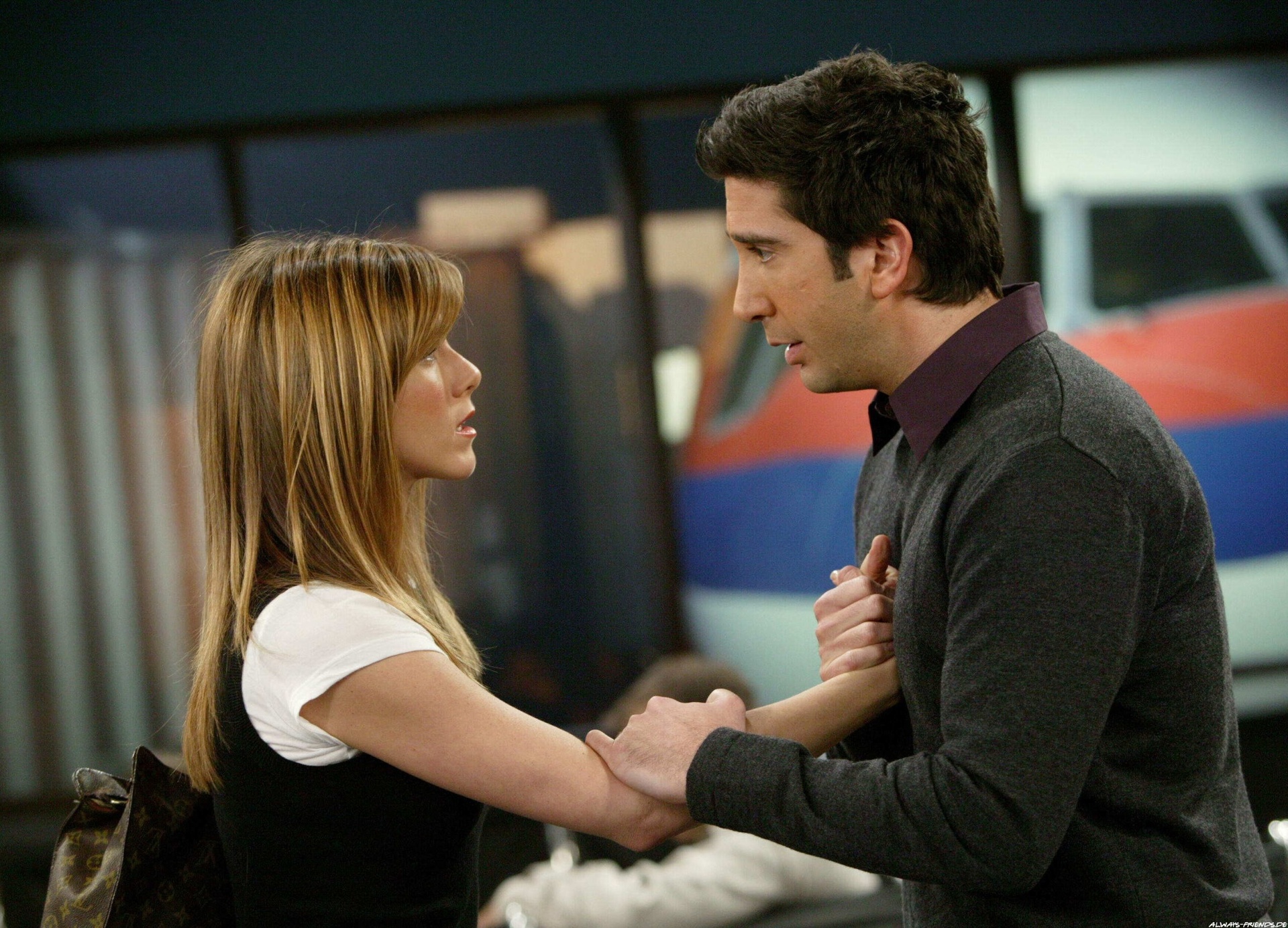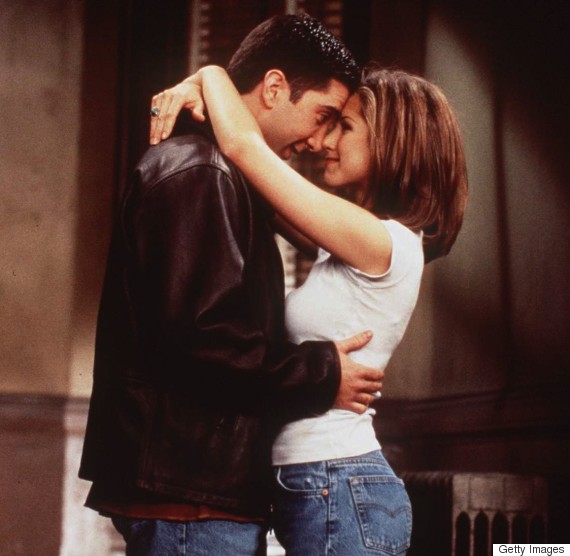What did “Friends” say about ‘90s dating culture? What has changed since then?
Take a look at any millennial-driven website, and you’ll see countless articles that wax on about Friends (1994)-induced nostalgia. For good reason: that show held the reins of the cultural juggernaut for about a decade, influencing, reacting to, and commenting on popular culture trends once a night every week. (There was the “Rachel” hairstyle, the “we were on a break” expression, the Rembrandts’ theme song, Chandler’s unique enunciations, etc.) This show crystallized a certain subset of the New York demographic on their specific, golden-washed experiences (read: beautiful, white, upper middle class, highly unrealistic, utopic). Thanks to the influx of dating advice and pop psychology that threaded their way through late nineties/early ‘00s pop culture, Friends maintained its “men are from Mars, women are from Venus” gender war mantra throughout its run.
Notably, while every episode revolved around dating, sex, and relationships, the Friends’ screenwriters and producers hysterically restrained the show’s dialogue in order to avoid explicit sexual vocabulary. There’s no way that friends in real life would throw in a pair of raised eyebrows with the vague “You know, be there for her” to adequately explain that Joey needs to be prepared to orally please a girlfriend the way Monica did in “TOW Rachel Finds Out.” This kind of innuendo successfully made the audience snicker and allowed the show to get away with Ross dumbly asking Rachel “You’re over me? When were you…under me?” and making it sound innocuous rather than sexual in an intentional way.
(My favorite bit of Friends trivia is that, according to the executive producers’ commentary on “TOW the Prom Tape,” after Phoebe put on a male swagger and declared, “I’m ready for my penis now,” while playing wingman for Chandler at Central Perk in that episode, the show’s writers could not say “penis” on air for about a five-year period.)
Despite the show’s penchant for innuendo and metaphor, and its spliced, out-of-order nature during syndication, Friends still left a lasting imprint on an audience who absorbed what the show told us about romantic relationships for uncertain twentysomethings. So what exactly did Friends teach us about dating and sex?
*The examples included in this list are obviously non-exhaustive.

Bros Before Hoes/Uteruses Before Dude-ruses
No matter what the circumstance, responsibility to friendships and family come before romantic and sexual relationships. Creeping on Joey’s current girlfriend and making a move on her was one of Chandler’s absolute low points. Falling in love with Rachel might’ve been acceptable, if only Joey had kept his feelings in the realm of fantasy and what-ifs. Rachel had absolutely no right to say “yes” to a date with Jean Claude Van Damme, because she was fully aware that Monica had a crush on him.
Notable examples: TO After the Superbowl Part 2 (S2 Ep 13), TOW Chandler in a Box (S4 Ep 8), TOW Emma Cries (S9 Ep 2), TOW Ross is Fine (S10 Ep 2)
Has anything changed? If anything, this rule seems to be stressed even more in 2015 than in 1994.
Casual Sex
Many can argue that the 2015 is all about the hookup, thanks to the proliferation and ubiquity of apps like Tinder and Grindr. (Consequently, this current generation gets judged as having a callous disregard for emotion and a penchant for capital-c Casual dating relations.) A lot of present-day media frames casual sexual relations as either “slutty” or something people need to get out of their system before settling down. Refreshingly, Friends showcases sex as just a natural act in which two consenting adults participate. Sex doesn’t change the world, doesn’t lock two people into a ‘til-death-do-us-part commitment, and doesn’t require much more than “Yeah, s/he’s cute, I’m interested in his/her sexy bits, let’s get it on.” Considering this was a primetime television show, this is a fabulous piece of normalizing presentation.
Notable examples: Pilot/TOW Monica Gets a Roommate, TOW Ross Finds Out (S2 Ep 7)
Has anything changed? Society as a whole has arguably taken a step back, with wide swaths of virgin vs. Madonna coloring current popular media. Glib statistics of higher percentage of unhappiness and dissatisfaction often accompany reports of the increase in free-for-all sexual activity.

Friends Have the Ultimate Say-So
What did the Spice Girls say? “If you wanna be my lover, you gotta get with my friends.” Friends form an inevitable hurdle that must be crossed in order to embark on a new relationship. Whether you ask for it or not, close friends will dispense judgment on your significant other. Admittedly, this particular group of friends is incredibly close-knit and depend on each other’s opinions a bit too much, so vigorous praises or emphatic “no’s” carry much more weight between them than in real-life scenarios.
Notable examples: TOW the Thumb (S1 Ep 3), TOW the Boobies (S1 Ep 13), TOW the Apothecary Table (S6 Ep 11), TOW Joey’s Fridge (S6 Ep 19)
Has anything changed? Making sure that a SO fits comfortably into an already existing group of peers made much more practical sense when that group sat on an orange couch nearly all day every day. However, now it’s not so much needing a unanimous yay or nay on that SO, as it is needing a thought-out, informed yay or nay from the one (or two) trusted friend who has the best judgement.
Female Orgasms
They are both mysterious and taken for granted. Ross marvels at the ability of women to have multiple orgasms in just the fifth episode of the series, while Joey is utterly clueless at the notion of making sure Melanie, his fruit basket crafting girlfriend, is sexually satisfied. Monica and Rachel have to walk Chandler through the steps of pleasing new girlfriend Kathy, teaching him that there is more than one erogenous zone (although in reality there are far more than the show’s identified seven). Additionally, female orgasms seem to take on an almost science-fiction quality when Phoebe giggles equally at a successful Princess Leia fantasy and a vibrating beeper. The girls also discover the importance of treating their own bodies and those of other “goddesses” bodies with the highest, most novel regard when they read the book Be Your Own Wind Keeper.
Notable examples: TOW the Sonogram at the End (S1 Ep 2), TOW East German Laundry Detergent (S1 Ep 5), TOW Rachel Finds Out (S1 Ep 24), TOW Eddie Won’t Go (S2 Ep 19), TOW the Princess Leia Fantasy (S3 Ep 1), TOW Phoebe’s Uterus (S4 Ep 11)
Has anything changed? Well…a multitude of print and online articles exist on reminding the sexually active population that females are, in fact, able to orgasm and that more finesse is required to eke out that orgasm than just in-and-out. So we’re all still learning.
Sex vs. Intimacy
Haven’t you heard? Women are far more in touch with their emotions because men have the emotional range of a teaspoon. (Wait, or is that just Ron Weasley?) A ‘90s sitcom staple is the hilarious miscommunication between the sexes: guys are more interested in sex while girls are more interested in intimacy, and it’s a long, befuddled road to get to the same plane. Friends, thanks to its 10-season run, had the privilege of peeling back its protagonists’ personalities to flesh them out beyond the thinly fleshed-out stereotypes that were introduced in the pilot episode. Therefore, by the show’s final episode, we understand that there’s more to Phoebe than her weird, colorful past; that Chandler isn’t so much terrified of commitment as he hasn’t yet discovered the perfect combination of best friend, lady-who-will-not-take-his-shit, and romantic soulmate that exists in Monica; that Rachel is a hopeless romantic who needed to discover her full potential outside of “daughter of a rich, Long Island surgeon”; that Joey is as earnest and lovelorn as he is sex- and food-obsessed; and that Ross needs stability and routine to keep his crazy in check. However, it’s pretty damn amusing seeing the six of them split off into the “boys versus girls” grouping as they tried to make sense of the distinction between sex and intimacy.
Notable examples: TOW George Stephanopoulos (S1 Ep 4), TOW the East German Laundry Detergent (S1 Ep 5), TOW Heckles Dies (S2 Ep 3), TOW Metaphorical Tunnel (S3 Ep 4)
Has anything changed? Sure, both men and women sometimes yearn and plan for their respective “boys’ night out” and “girls’ night out.” However, for most, these nights are less and less frequently divided by gender. And the myth that only women want emotionally fulfilling relationships is losing hold.

Porn is for Men
Watch Season 4, Episode 17 (TOW The Free Porn), alongside Season 7, Episode 2 (TOW Rachel’s Book). Both episodes deal with the consumption of porn. The earlier episode, however, frames it jokingly: when Chandler and Joey stumble on a channel that streams porn for free, of course they’re going to keep it on 24/7, mixed company be damned. In the latter episode, the audience isn’t laughing at the generalizing stereotype of “men think about sex every six seconds.” Instead, they’re laughing, along with Joey, at the thought of Rachel casually reading a well-thumbed-through erotic novel. Bottom line: it’s weird when women read or watch porn, but completely natural when men do so.
Notable example: TOW the Free Porn (S4 Ep 17) vs TOW Rachel’s Book (S7 Ep 2)
Has anything changed? Ownership over, acknowledgement of, and the embracing of one’s own sexuality, as a female, still raises a few eyebrows. There has been a slow turn away from the overwhelming status quo of “girls touching themselves, ew, why, it’s impure,” thanks to feminist porn and the delightful world of Tumblr providing a frank and judgment-free space for discussion.
Bisexuality and “Gay as Punchline”
Friends either completely ignores bisexuality or uses it as a joke to explain away effeminate characteristics of a male character (I’m thinking of Sandy, the nanny that Ross and Rachel interview to potentially look after Emma in season 9). Phoebe scoffs at bisexuality in one of the songs she presents to preschool kids in “The One after the Superbowl Part 1,” when she sings: “Sometimes men love women/Sometimes men love men/And then there are bisexuals/But some say they’re just kidding themselves.” Additionally, everyone’s sexuality is completely black and white on the show: Carol is a flat-out lesbian (even though there’s plenty of evidence that she may be bisexual) while it’s absolutely laughable to even consider Ross as gay; and because a simple kiss between two sorority girls is enough to turn one of them gay (look at Winona Ryder’s Melissa Warburton character in “TOW Rachel’s Big Kiss”), the pretext for two men napping together must be an especially manly re-watch of Die Hard. The show definitely has a “Gay as Punchline” problem, assuming the audience will laugh at Joey’s liking potpourri in “TOW Ross’s Teeth” or at Chandler’s disdainful treatment of his trans father or at any deviance from firm gender performance from each character. (This problem has enough material to be analyzed in its own article.)
Notable examples: TO After the Superbowl Part 1 (S2 Ep 12), TOW Ross’s Teeth (S6 Ep 8), TOW the Nap Partners (S7 Ep 6), TOW Rachel’s Big Kiss (S7 Ep 20)
Has anything changed? Acknowledging bisexuality is gaining more traction as a legitimate lifestyle and “Gay as Punchline” is, thankfully, no longer politically correct. Some people still consider bisexuality as a way for people to hedge their bets, to enjoy the privileges of both the alternate lifestyle and the heteronormative one, or to delay making a choice, but this is a shrinking minority.
Unspoken Relationship Rules
Friends articulated a long list of rigid dating rules that were taken for granted at the time: Wait three days before calling someone you’re interested in back. It’s up to the guy to make the first move. Certain friends-of-friends are off-limits to date without explicit permission: sisters, mothers, ex-significant others with baggage, just to name a few. Men and women have to tiptoe around relationship issues like how long one should cuddle the other, how to address failure to perform, how to discuss financial problems, etc. GAH. SO EXHAUSTING. A well-crafted text message is one thing, but a whole relationship that’s built on social cues that must be processed, absorbed, and then regurgitated is, to say the very least, shaky.
Notable examples: TOW the Evil Orthodontist (S1 Ep 20), TOW the Princess Leia Fantasy (S3 Ep 1)
Has anything changed? A whole lot of subterfuge and ego-fluffing existed in the portrayal of dating on Friends. Cringingly so. Thankfully, much of society has moved away from the three-day rule – most likely because this “rule” had become so entrenched that to follow it now comes across as obvious, stale game-playing – and has pushed aside many of the equally outdated dating “rules.”

In a time when the world of dating has shifted – in large part due to technology and the evolution of dating websites and applications – the trials and tribulations these six New Yorkers face as they navigate the confusing arena of romantic and sexual relations are incredibly comforting. Their dating qualms seem both familiar and antiquated and, unlike real life, are usually wrapped up within the 30-40 minutes of screen time. Because each episode can be revisited multiple times, viewers happily anticipate the end of each arc, living vicariously through the picture-perfect existence of Rachel, Monica, Phoebe, Chandler, Ross, and Joey. Viewers put their own insecurities and questions about modern dating norms on the back burner for the span of one (or more) episode of Friends.
Ending with four of its six major characters in love with each other, the series also suggested that friendship itself is the foundation of love. If Friends taught us nothing else, we learned that the best thing to do is to fall in love with your best friend, spend ten years in on-again-off-again status, and then live happily ever after.
Friends Series : Series
For more on great articles on Friends Series check out our Friends Series:Series

